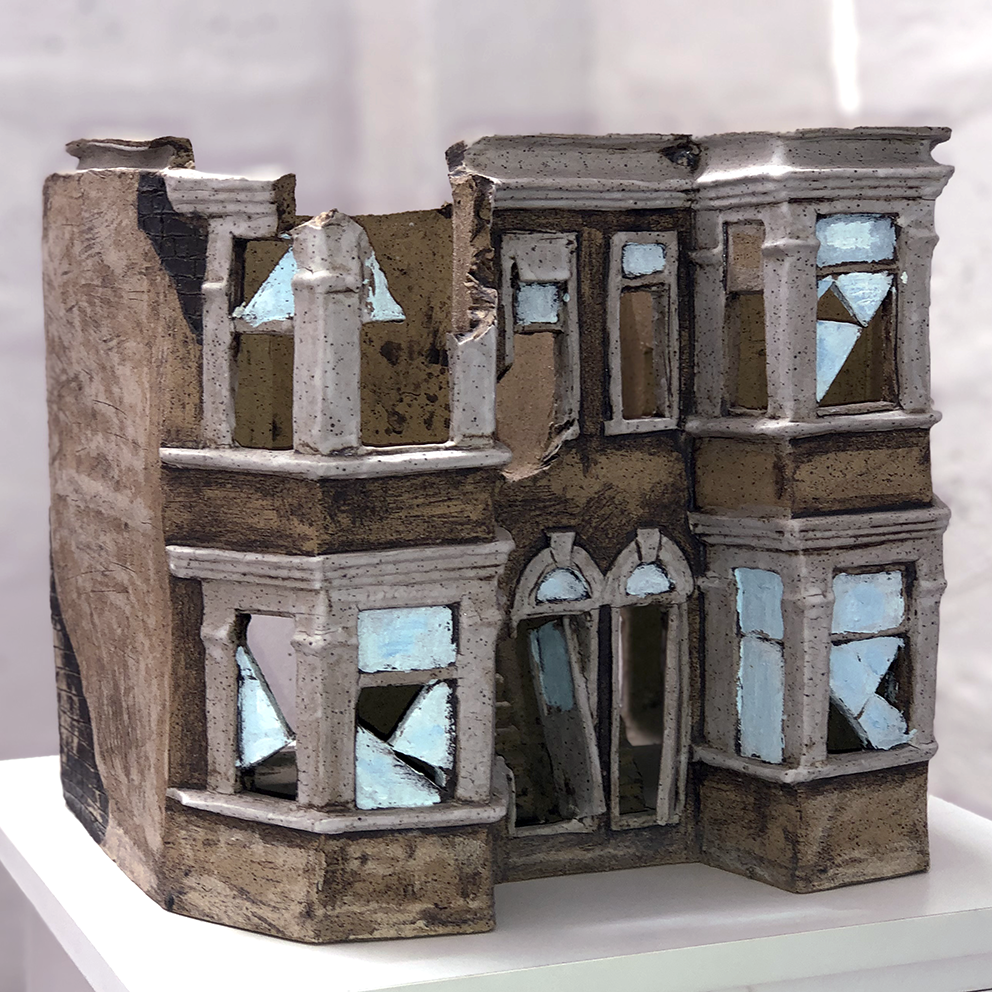
artists A–Z
Neville Assad-Salha
Neville Assad-Salha experiments with installation performance pieces, creating large-scale clay forms within the landscape and firing them on-site. His works range in scale, from small bowls that can be held in the palm of one's hand to expansive structures that can be entered and experienced as dwellings.
Mahassen Ajam
Mahassen Ajam is entirely devoted to sculpture and creativity, with a particular fondness for terracotta as a medium. Her primary focus is on capturing the dynamics and sensuality of the human figure. Through her skillful manipulation of the material, she creates bodies that reflect diverse themes and explore how they interact in various situations and conditions.
May Abboud
May Abboud explores the use of textures on sculptures that bridge the gap between traditional vessels and dresses. These female forms serve as a means to explore the diverse range of textures that can be imprinted on clay. She thoroughly enjoys working with clay and finds it to be an expressive medium.
May Ammoun
May Ammoun approaches her art by personally preparing glazes using minerals and ashes, infusing her work with her intimate emotions. She aims to express lived moments, memories, and images through her art, capturing a variety of shapes that embody freedom. Her artworks exhibit sharp, abrupt, or rounded lines, symbolizing her continuous self-transformation.
Michèle Assaf Kamel
Michèle Assaf Kamel follows her own logic. Her pieces initially representing building blocks, are a questioning of otherness, of knowing others and the possibility of existing with or without them. Kamel’s interest in her homeland drives her unusual, thought-provoking sculptures, which reflect the aspiration of a new world and the existence of wide unexplored territories that are so far, yet so close.
Rina Jaber
Rina Jaber strives to convey profound and mysterious concepts such as Wabi-sabi, Yugen, and Shibui that cannot be easily expressed in words. She employs the technique of hand-building, completely excluding the potter's wheel, allowing for a direct interaction between the artist and the clay.
Sabine Karam
Sabine Karam is a Lebanese American artist working with ceramics and bronze.
She is a graduate of the Lebanese University with a Master’s degree in Biology and holds a degree in fashion design. She decided to pursue a career in art and started with painting (oil and watercolor) but she was not satisfied. When she moved to NY City she enrolled at the Art Students League. There she discovered her passion for sculpture and hand-built work and she knew immediately that this was her artistic calling. She then took formal education in ceramics at the Arts Center of the Capital Region (ACCR) in Troy, NY from 2006 to 2012.
Samar Mogharbel
In post-war Beirut, Samar Mogharbel explored the city's anonymous and shapeless landscape. She uncovered hidden structures that revealed the remnants of old Lebanese houses, showcasing their unique architectural details and diverse cultural influences.
Samir Mueller
Samir Mueller departed from traditional pottery and embraced a contemporary mode of expression, disregarding functionality and focusing on pure visual pleasure. He transformed clay into a canvas, using engobe as pigment and his fingers as brushes.
Guitta Melki
Guitta Melki has a passion for ceramics, an old medium that often remind her of the creation phenomena, stated in the Bible, of how man was created from dust in the image of his creator. Likewise, she finds herself creating vessels in the form of abstracted figures; referencing the foot, waist, neck, shoulders or hands of classical pot forms. Often, she creates a supporting sister or partner for each vessel to strengthen their existence.
Maha Nasrallah
Maha Nasrallah explores the expressive potential of clay, pushing the boundaries of traditional techniques, and experimenting with innovative forms and textures. Her pieces often reflect her introspection and observations of the world around her, capturing the essence of human emotions, memories, and the intricacies of nature.
Mona Sayegh
The work in ceramics by Mona Sayegh originated from the concept of functionality. The exhibited pieces utilize the Raku firing technique, which emphasizes this idea as its results cannot be fully controlled or predicted. The technique's meaning also adds to its significance, as it embodies enjoyment, comfort, and pleasure.
Dorothy Salhab Kazemi
As a pioneer of modern ceramics in Lebanon, Dorothy Salhab Kazemi introduced stoneware and porcelain, revolutionizing the traditional clay baking process. Influenced by anthropologist Edward Leach, she used a manual wheel to create objects with their own distinct identities. Dorothy also shared her expertise as a ceramics expert at an archaeological excavation site in Syria.















